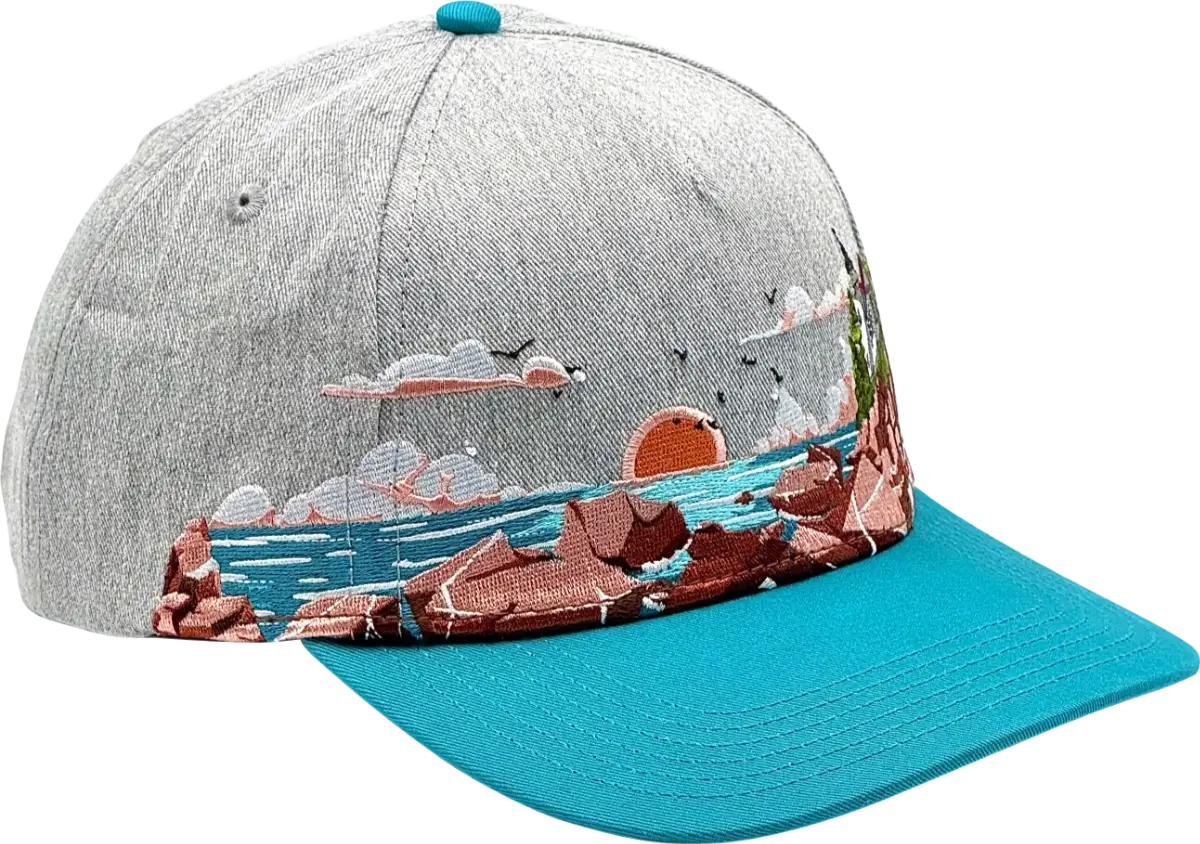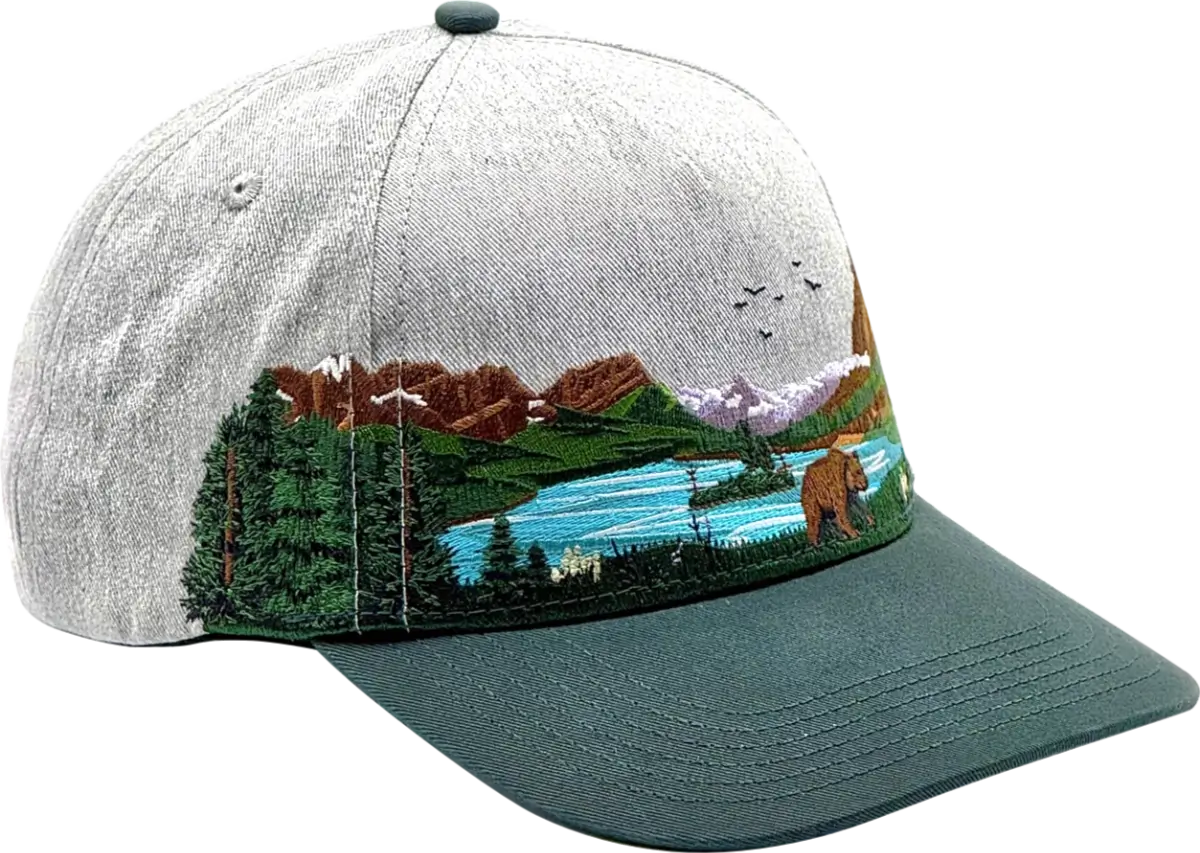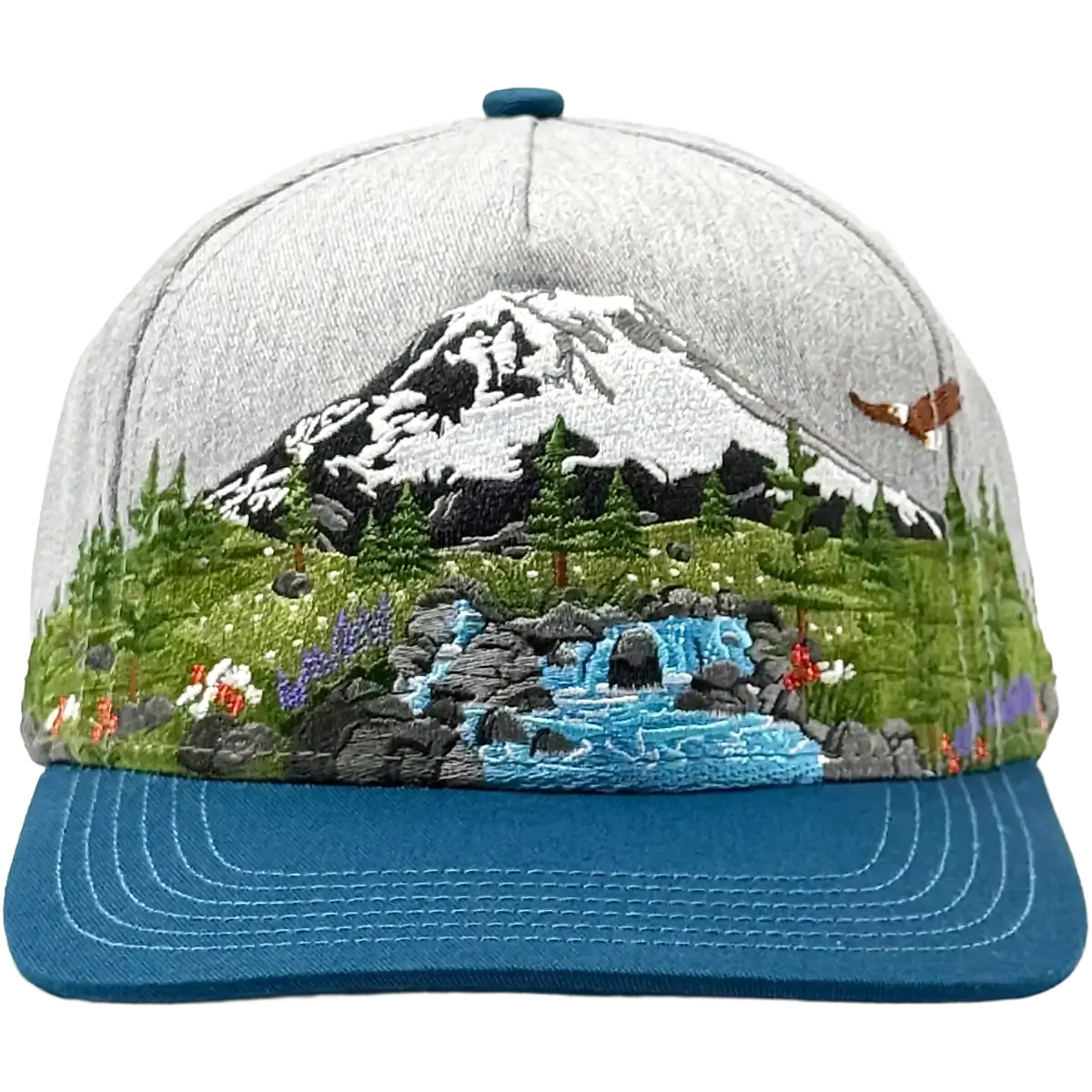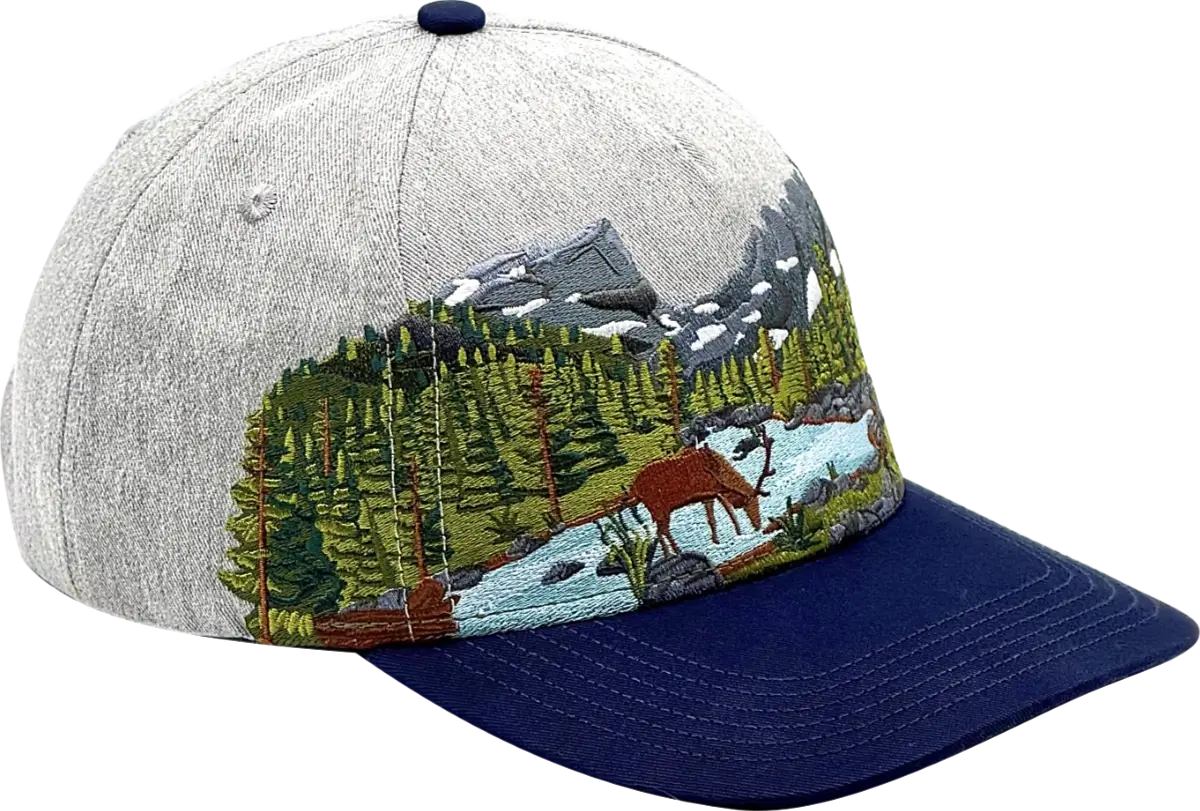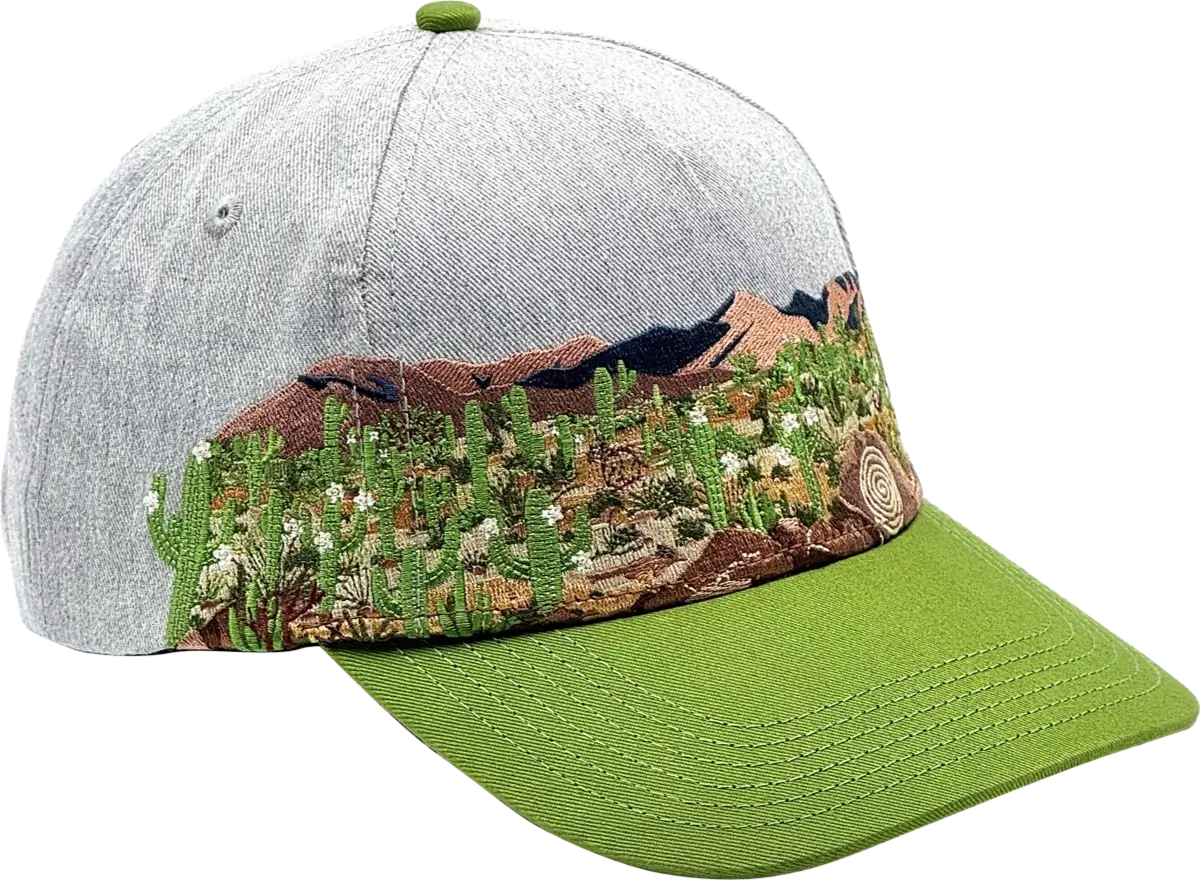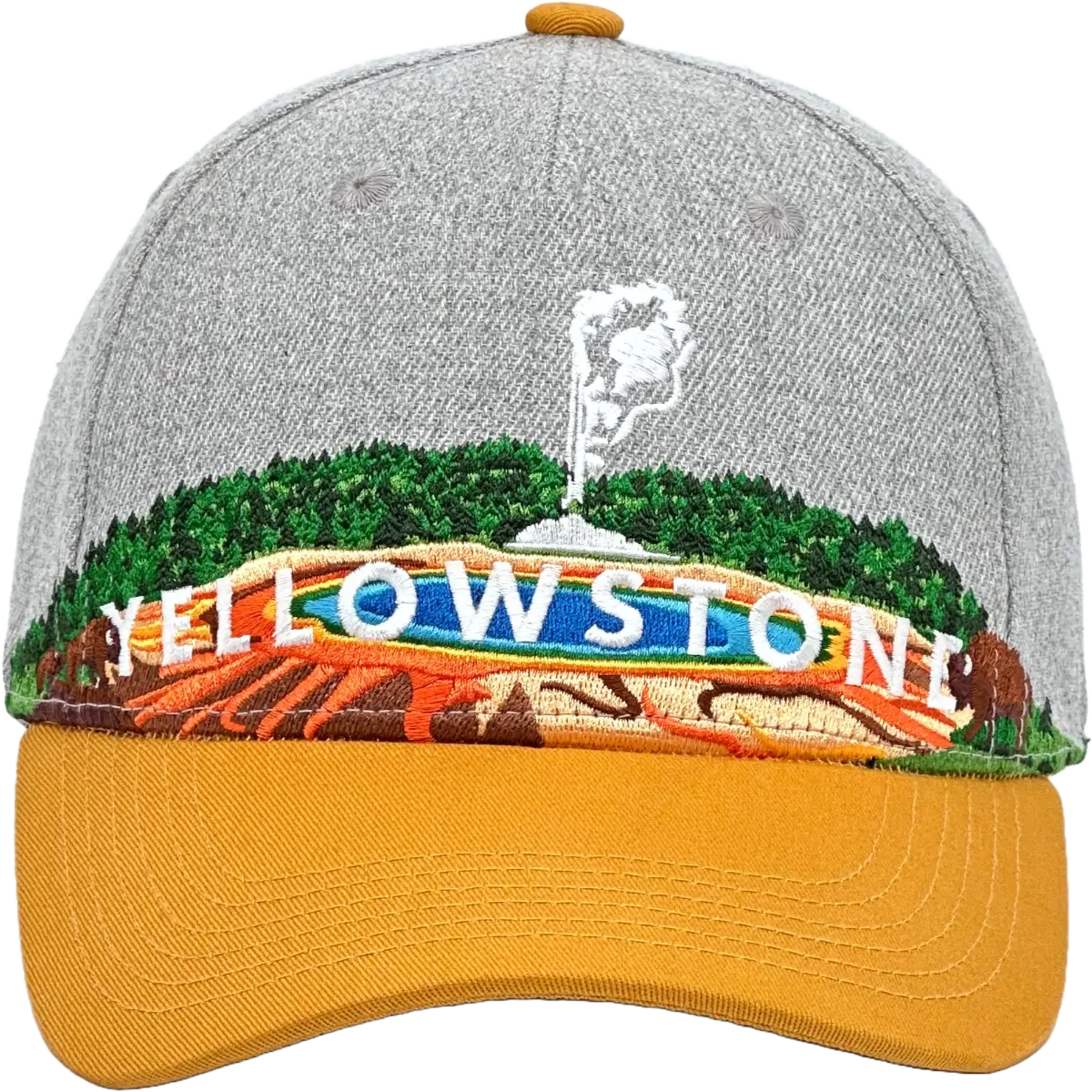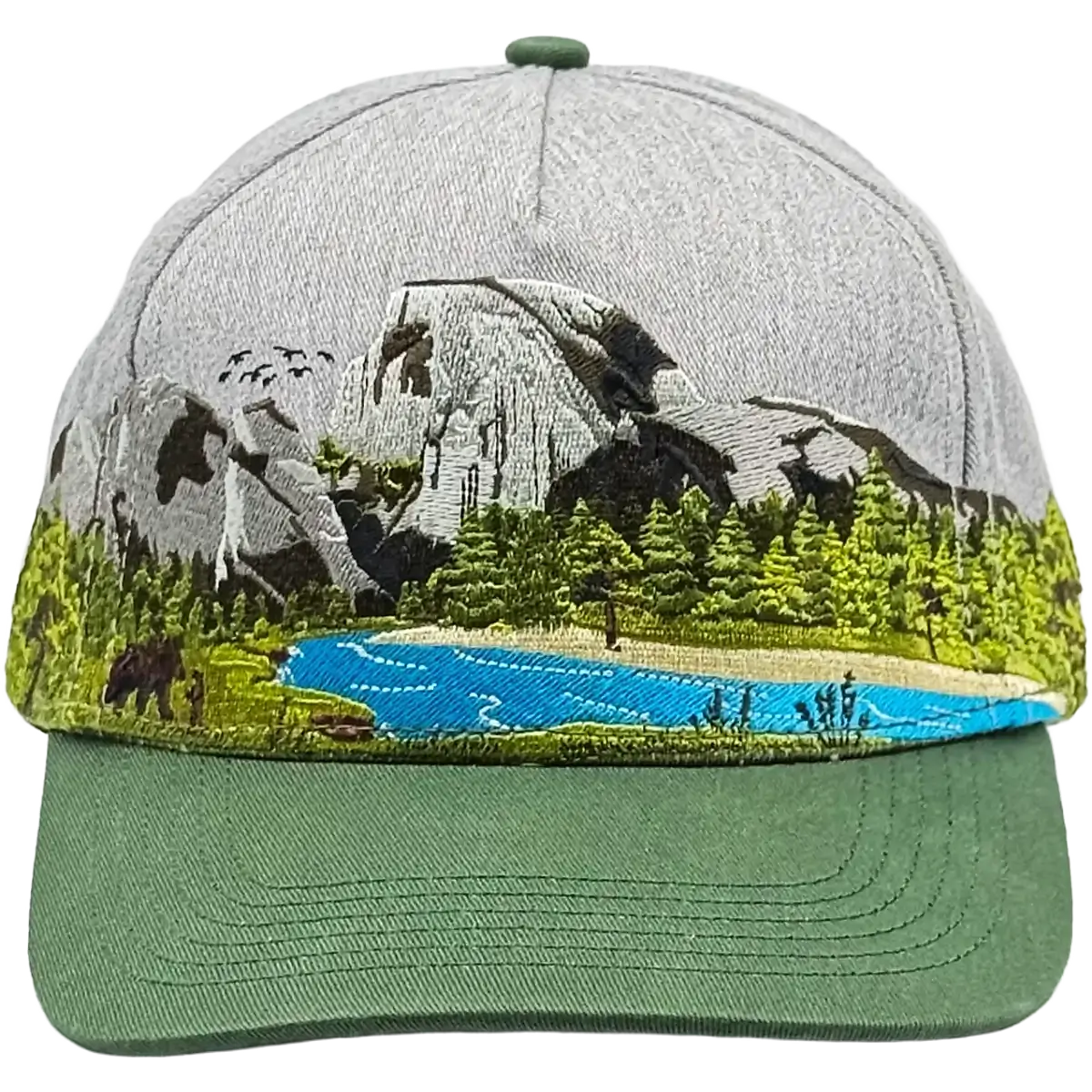Grand Teton
National Park Hat
Details
- Embroidered panoramic design
- Adjustable snapback hat
- Structured mid-profile 5 panel
- Cotton, handwash
- Free shipping, free returns
- 100% of profits donated to National Parks
Our Mission
I'm Ian - from Seattle, and at Rainier Hat Co. we're dedicated to giving back to the places that inspire us every day. From the glaciers of Mount Rainier to the grand prismatic springs of Yellowstone, our national parks are treasures that deserve our support.
That's why we've made a commitment that goes beyond the norm: donating all our profits to these natural sanctuaries. It's not just about creating high-quality (and awesome) hats inspired by the beauty of the outdoors, it's about contributing to the preservation of these areas for future generations to enjoy.
Grand Teton National Park Hat Inspiration
The inspiration for this Grand Teton National Park hat comes from the A.T. Moulton Barn on Mormon Row, one of the most recognized structures in the park. Built in the early 1900s by homesteaders in the Jackson Hole valley, the barn sits beneath the jagged Teton Range with open sagebrush flats stretching out in every direction.
The hat design captures the barn in the early morning with the rising sun casting a warm light on the peaks of the Tetons. A grazing bison shown in the foreground is a common sight in this part of the park, especially in the summer and fall. The wide open landscape allows for clear views of the mountains and frequent wildlife activity including herds of bison, elk, and pronghorn moving through the flats.
Visitors to Mormon Row can still see the original irrigation ditches, corrals, and outbuildings used by homesteaders over a century ago. Though the area is no longer farmed, it remains part of the park’s preserved cultural landscape. Today the site offers a unique combination of natural scenery and human history, where the presence of wildlife and the dramatic backdrop of the Tetons remain largely unchanged.
Design Process
Creating these National Park hats with their panoramic embroidery is a detailed process going beyond simply buying and reselling bulk designs. There are no logos and no branding on any of our hats, just National Parks, from a small company in Seattle, Washington.
The first step is having gone to every park we feature, and we have! We try to find that specific viewpoint in the park to show off and what we need to do to capture the feeling of being there. Sometimes we ad-lib a bit of the design to include other elements to capture the feeling of the park as a whole, but we try hard to highlight an actual place in the park you can visit.
Then we get to designing! Embroidery is naturally limited in colors and we use a 15 color (the most you'll find) edgeless embroidery process which takes upwards of 90 minutes and over 60,000 stitches per hat, but allows us to show off every detail from that epic mountain range to the colorful flowers in your favorite park.
Finally the design get digitized for embroidery, a sample is made for any final tweaks, and we go to production getting these fantastic hats on your heads.
And 100% of our profits are donated right back to our National Parks .
Visit the Inspiration
To get to the A.T. Moulton Barn on Mormon Row, take U.S. Highway 191 north from Jackson and turn right on Antelope Flats Road. The road is paved for a short distance before turning to gravel but remains passable for most vehicles in good weather. Mormon Row is clearly marked and includes several preserved homesteads dating back to the early 1900s.
This barn is one of the most recognized structures in the park and stands in front of the Teton Range with open sagebrush flats surrounding it. From the main pullout visitors can walk short distances to view the barn from different angles. The mountains behind it, including Grand Teton and Middle Teton are often visible depending on light and weather.
Morning is typically the clearest time for viewing and photography as clouds and wind are more common later in the day with wildlife such as bison, pronghorn, and coyotes sometimes seen in the area and most active during early hours or near sunset.
Grand Teton National Park
Grand Teton National Park, located in northwestern Wyoming, preserves the stunning Teton Range and the surrounding valley of Jackson Hole. Established in 1929 and later expanded in 1950, the park spans over 310,000 acres of protected land. The Tetons rise dramatically from the valley floor, with the highest peak, Grand Teton, reaching 13,775 feet. These rugged mountains were shaped by glacial activity, and their sharp, jagged peaks create one of the most iconic landscapes in the United States.
The park is home to diverse wildlife, including large mammals like elk, moose, and bison, as well as predators such as grizzly and black bears. The Snake River winds through the valley, supporting aquatic life and providing habitat for bald eagles, ospreys, and beavers. Visitors may also encounter smaller species like marmots, pikas, and foxes while exploring the park’s trails. The area’s ecosystems range from alpine tundra to dense forests and wetlands, creating a rich environment for plant and animal life.
Outdoor recreation is a major draw for visitors, with over 200 miles of hiking trails leading to alpine lakes, glacial basins, and panoramic overlooks. Popular trails include the Cascade Canyon Trail, Taggart Lake Trail, and the climb to the summit of Grand Teton for experienced mountaineers. In addition to hiking, activities such as camping, boating, and fishing allow visitors to experience the park in a variety of ways. The Snake River also offers opportunities for scenic floats and whitewater rafting.
The park holds significant cultural and historical value, with evidence of human presence dating back thousands of years. Native American tribes, including the Shoshone and Bannock, have long used the region for hunting and gathering. In the late 19th and early 20th centuries, homesteaders and ranchers settled in Jackson Hole, leaving behind historic structures such as those found on Mormon Row. Today, these sites offer visitors a glimpse into the area’s past and the challenges faced by early settlers.
Grand Teton National Park is open year-round, though accessibility varies by season. Summer offers the best conditions for hiking and wildlife viewing, while winter transforms the park into a landscape suited for cross-country skiing and snowshoeing. The park is part of the Greater Yellowstone Ecosystem, one of the largest nearly intact temperate ecosystems in the world. As such, conservation efforts continue to protect its landscapes and wildlife for future generations.
Most Popular Hikes
Jenny Lake Trail
This scenic loop around Jenny Lake provides hikers with stunning views of the Teton Range and access to Hidden Falls and Inspiration Point. The well-traveled trail follows the shoreline, offering opportunities to see wildlife and enjoy the park’s natural beauty. A boat shuttle is available for those wanting a shorter hike.
Cascade Canyon Trail
The Cascade Canyon Trail follows a glacially carved valley into the heart of the Teton Range. Hikers can enjoy waterfalls, towering cliffs, and chances to see moose, bears, and pikas along the way. The trail begins at Jenny Lake and extends deep into the backcountry, making it a rewarding day hike.
Taggart Lake Trail
This short, family-friendly hike leads to Taggart Lake, where clear waters reflect the towering peaks of the Teton Range. The trail winds through aspen groves and open meadows, offering excellent opportunities for wildlife viewing. It is a great choice for those looking for a scenic but less strenuous hike.
Static Peak Divide Trail
This strenuous hike climbs above 10,000 feet, rewarding hikers with panoramic views of the Teton wilderness. The trail passes through forests and alpine meadows before reaching Static Peak Divide, a high mountain pass with sweeping vistas. Due to the elevation gain and exposure, this hike is best suited for experienced hikers prepared for changing weather conditions.
Moulton Barn and Mormon Row
T.A. Moulton’s barn, part of the Mormon Row Historic District in Grand Teton National Park, is one of the most photographed barns in the world. Built in the early 1900s by Thomas Alma (T.A.) Moulton, the barn was part of a homestead where he and his family worked the land. The barn’s location at the base of the Teton Range, combined with its classic wooden structure, makes it an iconic symbol of the American West.
T.A. Moulton and his family were among the homesteaders who settled in Jackson Hole in the late 19th and early 20th centuries. Like other settlers on Mormon Row, they relied on irrigation to cultivate crops and raise livestock in the challenging mountain environment. The barn was constructed using traditional timber-frame techniques, designed to store hay and shelter animals through the harsh Wyoming winters. Over time, it became a recognizable structure as visitors to the area began photographing the historic homestead.
In the mid-20th century, the federal government acquired much of the land in Jackson Hole to expand the national park, including the Moulton homestead. While most homesteads were removed, the T.A. Moulton Barn and a few other structures from Mormon Row were left standing due to their historical significance. Today, the National Park Service maintains the site, ensuring that visitors can continue to experience and appreciate this piece of Wyoming’s past.
Visitors to Grand Teton National Park frequently stop at Mormon Row to view and photograph the T.A. Moulton Barn, particularly at sunrise when the morning light illuminates the barn and mountain range. The barn has become a cultural landmark, representing the resilience of early settlers and the park’s commitment to preserving historical structures. Though no longer in use, the barn remains a lasting tribute to T.A. Moulton’s efforts and the legacy of homesteaders in Jackson Hole.
Wildlife and Ecosystems
Grand Teton National Park supports a diverse range of ecosystems, from sagebrush flats to alpine tundra, providing habitat for a wide variety of wildlife. The park’s location within the Greater Yellowstone Ecosystem makes it one of the most intact temperate ecosystems in North America. These protected lands support large mammals, birds, amphibians, and countless plant species, all playing essential roles in the park’s ecological balance.
Large mammals are among the most recognizable species in the park, including elk, moose, bison, and mule deer. Elk migrate seasonally between the park and the nearby National Elk Refuge, while moose are often seen near rivers and wetlands, browsing on willow and aquatic vegetation. Bison, one of the most iconic species in the park, graze in the open grasslands, and their herds can often be spotted along the roadways. Visitors should always keep a safe distance from these animals, as they are wild and unpredictable.
Predators also play an important role in the park’s ecosystem, helping to maintain population balance among prey species. Grizzly and black bears roam the forests and meadows, foraging for berries, roots, and small mammals. Wolves, which were reintroduced to the Greater Yellowstone Ecosystem in the 1990s, have established packs in and around the park. Coyotes, foxes, and mountain lions are also present, though they are more elusive and rarely seen by visitors.
The park’s rivers, lakes, and wetlands support fish species such as the native Snake River cutthroat trout, as well as amphibians like boreal toads and Columbia spotted frogs. Wetland areas provide important breeding grounds for migratory birds, including sandhill cranes, trumpeter swans, and a variety of waterfowl. Raptors such as bald eagles, osprey, and peregrine falcons can be seen hunting along the waterways and open meadows. Birdwatchers will find excellent opportunities to observe a diverse range of species throughout the year.
The elevation changes in Grand Teton National Park create distinct ecological zones, from low-elevation sagebrush flats to high-elevation alpine tundra. Sagebrush ecosystems support pronghorn and small mammals, while dense forests provide shelter for bears and owls. As elevation increases, trees become sparse, giving way to subalpine meadows filled with wildflowers. The harsh conditions of the alpine tundra, above 10,000 feet, support only hardy species like pika and marmots. These varied habitats make the park an important refuge for wildlife and a key part of the Greater Yellowstone Ecosystem.
